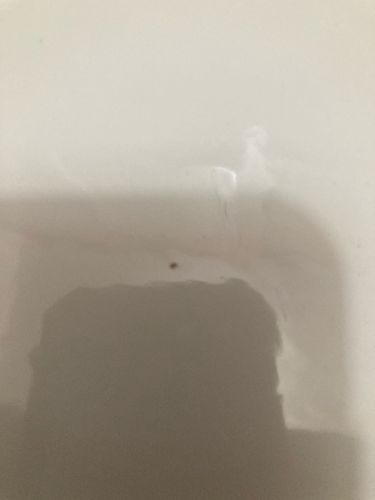Carpet Beetle (appears to be a Varied Carpet Beetle or a similar species)
Scientific Name: Most likely part of the genera 'Anthrenus' (e.g., Anthrenus verbasci for Varied Carpet Beetle) or 'Attagenus' (e.g., Attagenus unicolor for Black Carpet Beetle), exact species cannot be determined from the image.
Order & Family: Order: Coleoptera, Family: Dermestidae
Size: Adults typically range from 2-5 mm (0.08-0.2 inches) in length. Larvae can be slightly larger, up to about 5-6 mm.

Natural Habitat
Indoors, they are commonly found in homes, museums, warehouses, and other buildings, inhabiting carpets, rugs, upholstered furniture, clothing, attics, and storage areas. Outdoors, they can be found in bird or rodent nests, animal carcasses, and in gardens on flowers.
Diet & Feeding
Larvae primarily feed on animal products containing keratin (e.g., wool, fur, feathers, silk, leather) and chitin (e.g., insect remains), as well as dried plant materials, pet food, and sometimes synthetic fibers if soiled. Adults feed on pollen and nectar.
Behavior Patterns
Carpet beetle larvae prefer dark, undisturbed areas, feeding on keratin and chitin. Adults are attracted to light and feed on pollen and nectar. They undergo a complete metamorphosis (egg, larva, pupa, adult). Indoor infestations are often indicated by damaged fabrics, furs, or stored dry goods.
Risks & Benefits
Potential risks include damage to natural fibers (carpets, clothing, furniture), museum specimens, and stored foods. They do not bite humans or transmit diseases. Benefits include their role as scavengers in breaking down organic matter in natural environments.
Identified on: 8/20/2025